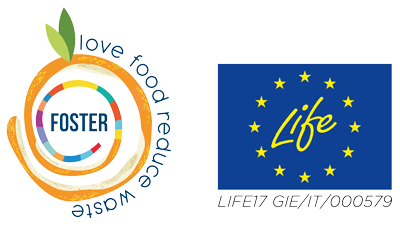How are we currently treating our planet?
It is almost impossible to comprehend the fact that the world produces 1.6 billion tonnes of food waste, of which 1.3 billion tonnes of food could be reused as it is still edible. All the while, so many people remain undernourished worldwide. Also, methane emissions from the food waste developed in landfills are the most significant source of greenhouse gas emissions. Consequently, our planet’s biodiversity, the quality of our freshwaters, and the fertility of our soil are diminished greatly due to GHG emissions. Another statistic shows that the carbon footprint created from the food waste sector reaches startling 3.3 billion tonnes of CO2 of GHG emission.[1]
The byproduct of food waste and food loss in today’s advanced world are excruciating numbers that show the accurate picture of how we are treating our planet. So many of us go about our days not thinking how much food we wasted unnecessarily, simply because our minds were focused on “more important” things.
The extent of the waste we produce
It is not just the food that creates so much pollution – plastic is undoubtedly one of the biggest waste issues that aggravate the current situation.
In the 1970s, the plastic industry created the three arrow sign (the well-known recycle symbol) on many plastic products to display an image to the public that they are concerned about the massive plastic production. But the truth is, the industry used the recycle symbol to calm those just frivolously wondering where that plastic goes after using it. Nonetheless, in the last 60 years, 8.3 billion tonnes of plastic have been produced – less than 10% of that have been recycled.[2]
A stunning study conducted by World Wildlife Fund (WWF) showed that we consume plastic every day through food, water, and air. Even if we try to keep our water filtered and food as organic, local and fresh as possible, we still inhale it since the plastic gets reduced to small particles that roam around the air we breathe. They used the term “plastic diet” to depict the shocking data showing that the amount of plastic we ingest weekly can be compared to the size of a credit card.[3]
Although it is essential to always keep the bigger picture in mind, in this article, we focus mainly on the food waste sector, so the 3Rs (rethink, reduce, reuse) will be concerned with food waste.
So, what can we do?
Raising awareness of the reality we live in is the first step towards the change we strive for. Thus, the statistics are important as they give us a clear image of the consequences our current actions and lifestyle create. And they are urging us to act now.
We are responsible for educating ourselves by reading and researching valuable sources and familiarizing ourselves with sustainable practices that are critical to act upon.
The catching phrase “rethink, reduce, reuse” has been around for some time now. However, the condition of our fields and land asks us to dive deep into each of these practices and really start living according to them.
Rethink
The change starts from within. Our choices and actions mainly stem from our beliefs, core principles and habits. For this reason, if we do not feel the urge to help tackle food waste, it is most likely we won’t do anything about it.
But, if we want to participate in creating a better future for the environment, we need to go inwards before making any change; it is essential to ask ourselves and rethink our lifestyle and habits:
How much food waste are we producing within our household?
What can I do differently to reduce the waste I am producing?
How can I motivate my friends and family to do the same?
On a broader scale, our governments can be influenced by the people that are passionate about combating the environmental issues. If we are loud and clear enough, we can reach out to the local and national authorities and address these crucial problems affecting us all. The key is in cooperation.
Similarly, restaurants, fast-foods, cafeterias and other outdoor eateries need to rethink their model of business as well since, along with the households, they are among the highest food waste producers.
Reduce
After reorganizing our beliefs and principles according to new goals and sustainable ideas, it is time for the next step – reduce. There are many ways to efficiently reduce the waste we produce, and all it takes is a strong motivation, some valuable information on methods and then, actually reducing the waste.
Food and Agriculture Organization (FAO) brings an excellent overview of the small but meaningful steps we all can take to reduce food waste, starting today.[4]
We can begin with cooking at home because even if we don’t have much time on our hands, we can find a simple recipe and create a nourishing meal, sometimes even under 15 minutes.
Along with cooking, we can become more aware of the amount of food we buy and consume. We should develop our sense of how much food our household needs and how much food we already have stored in our fridge or storage. This way, we won’t buy more than we need and won’t waste as much.
Reuse
Reuse is another practical step in the “3R formula”. Practices for reusing our food vary, and we can always first see what suits our lifestyle the most because the easier we adapt to these steps, the longer we will stick with them and, therefore, create a stronger impact in the long run.
For example, if we want to have a garden or already have one, we can start composting our fruit and vegetable peels, eggshells and coffee grounds. Compost soil is the most fertile and most healthy soil (if not treated chemically) for our garden. Moreover, you save time and money since you don’t have to buy fertilizer or do grocery shopping as much as before.
Also, if we made too much food the previous day, we can use our leftovers and make a creative new recipe. The result is the reduced amount of food we will spend on that day. Also, using leftovers can be quite fun, especially if we made something super delicious the previous day.
[1] https://www.fao.org/news/story/en/item/196402/icode/, 9 January 2022
[2] https://www.youtube.com/watch?v=kufhML6cy4U
[3] https://www.wwf.org.au/news/news/2019/revealed-plastic-ingestion-by-people-could-be-equating-to-a-credit-card-a-week, 9 January 2022
[4] https://www.fao.org/fao-stories/article/en/c/1309609/, 9 January 2022


